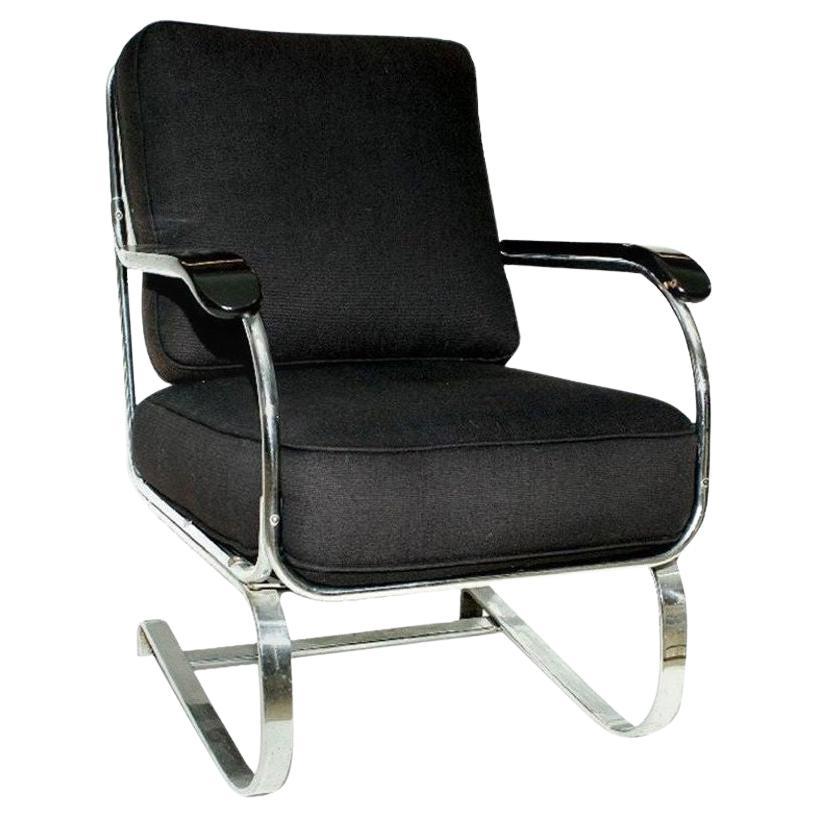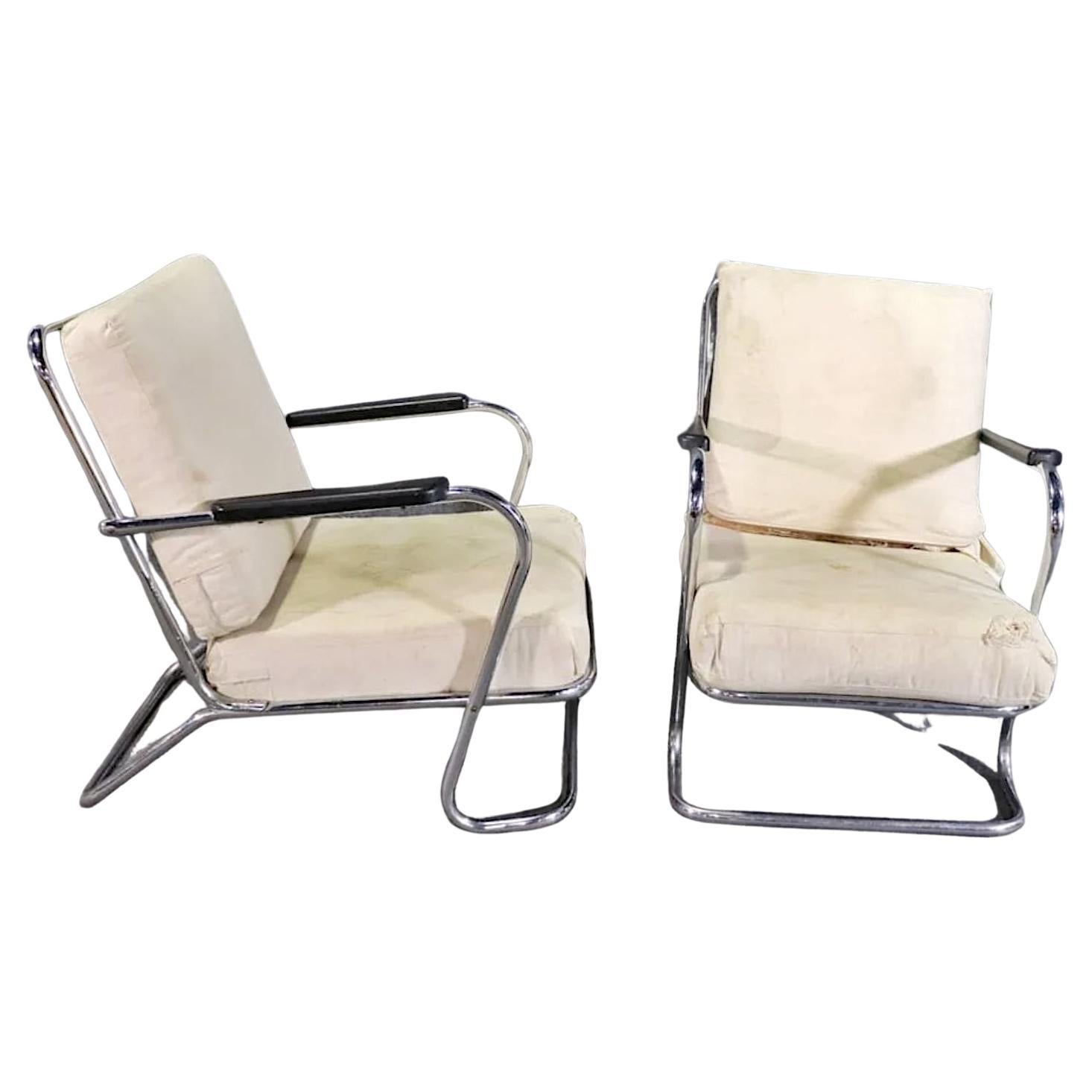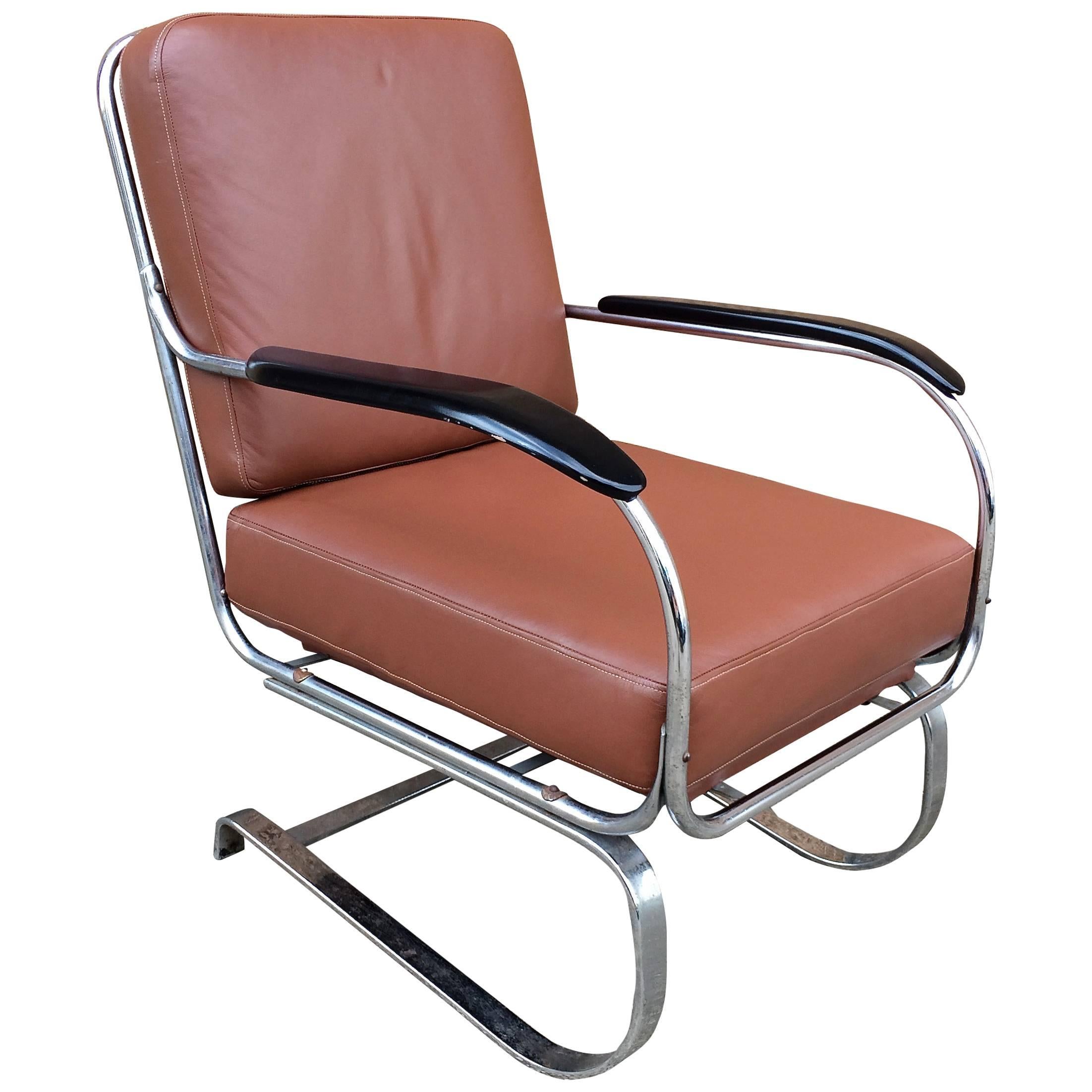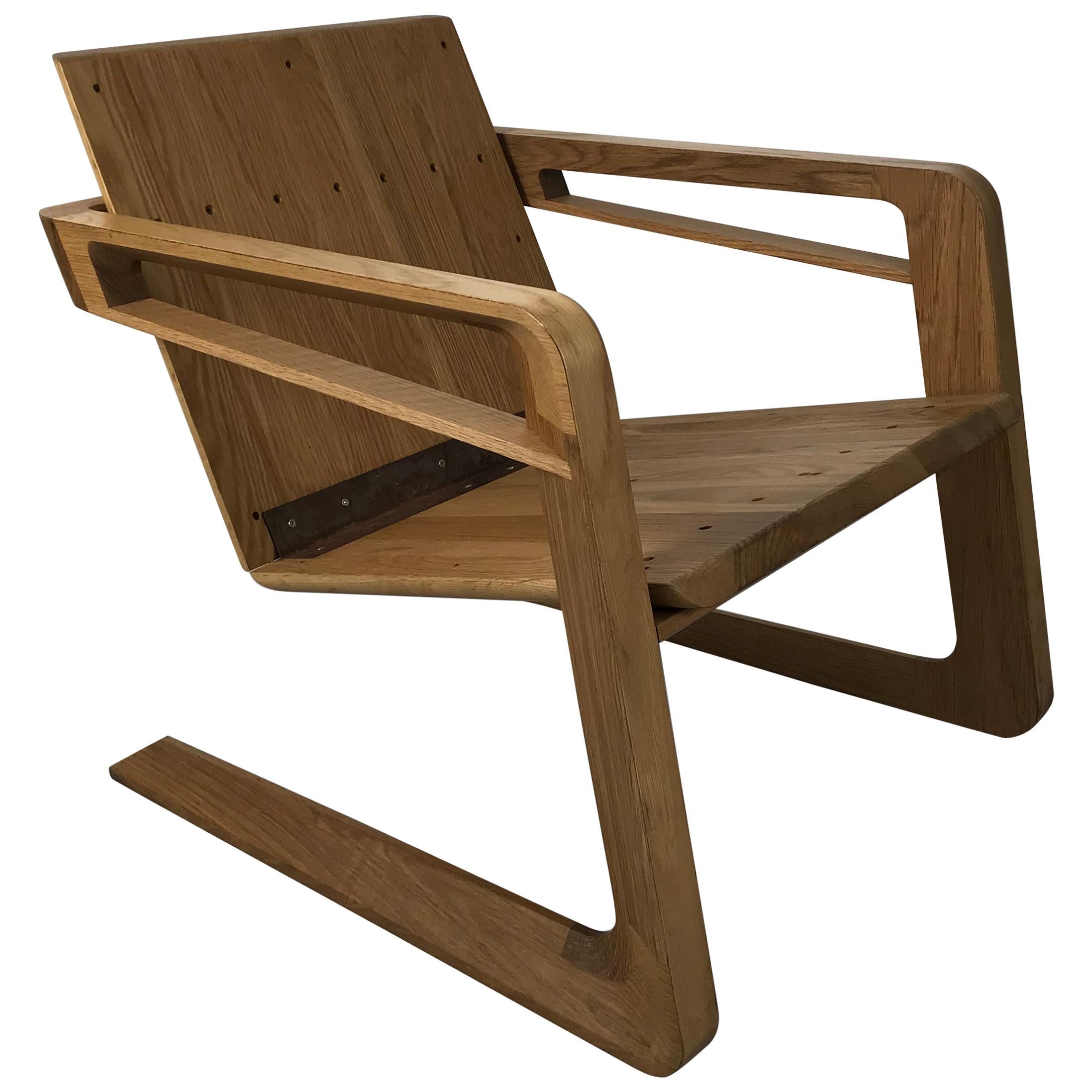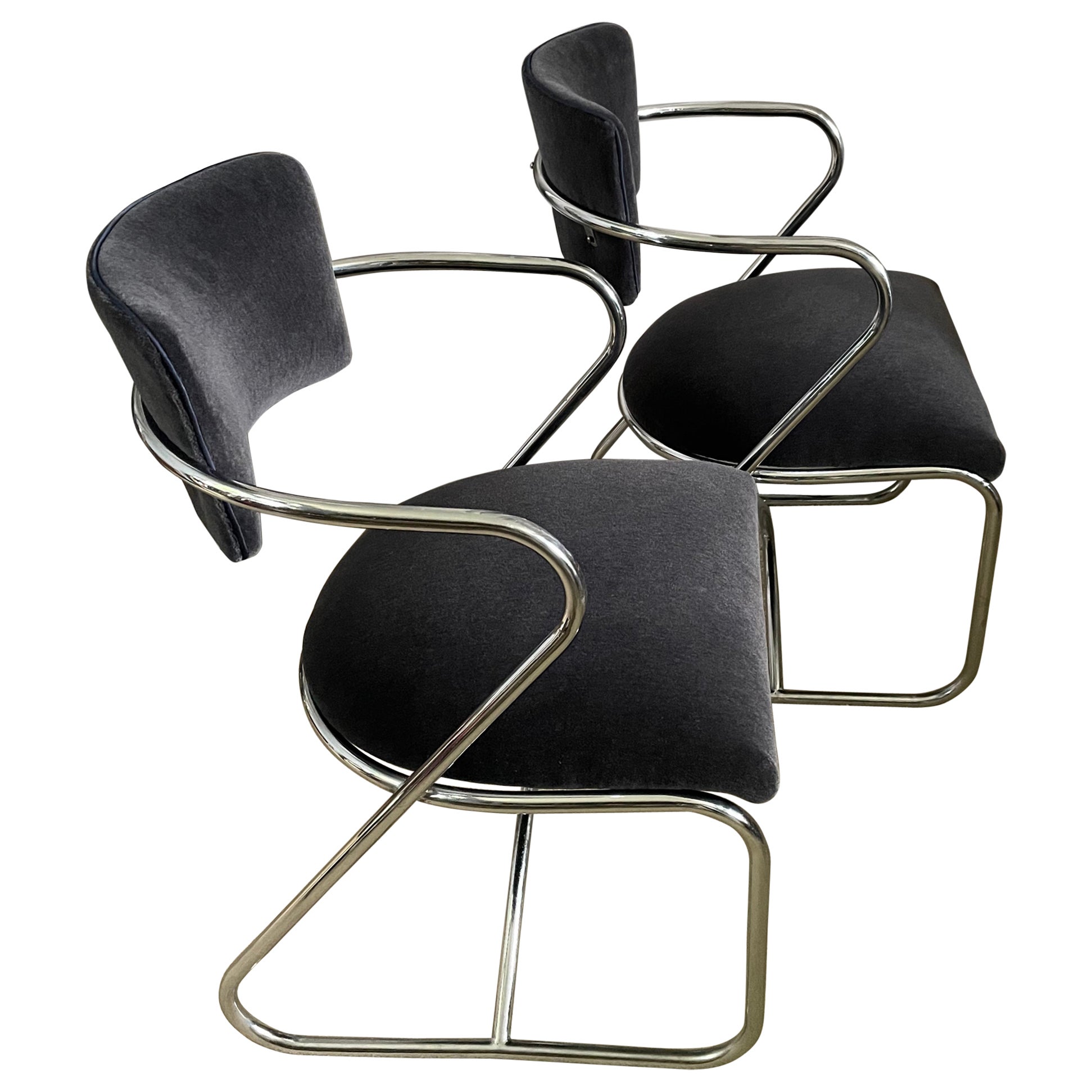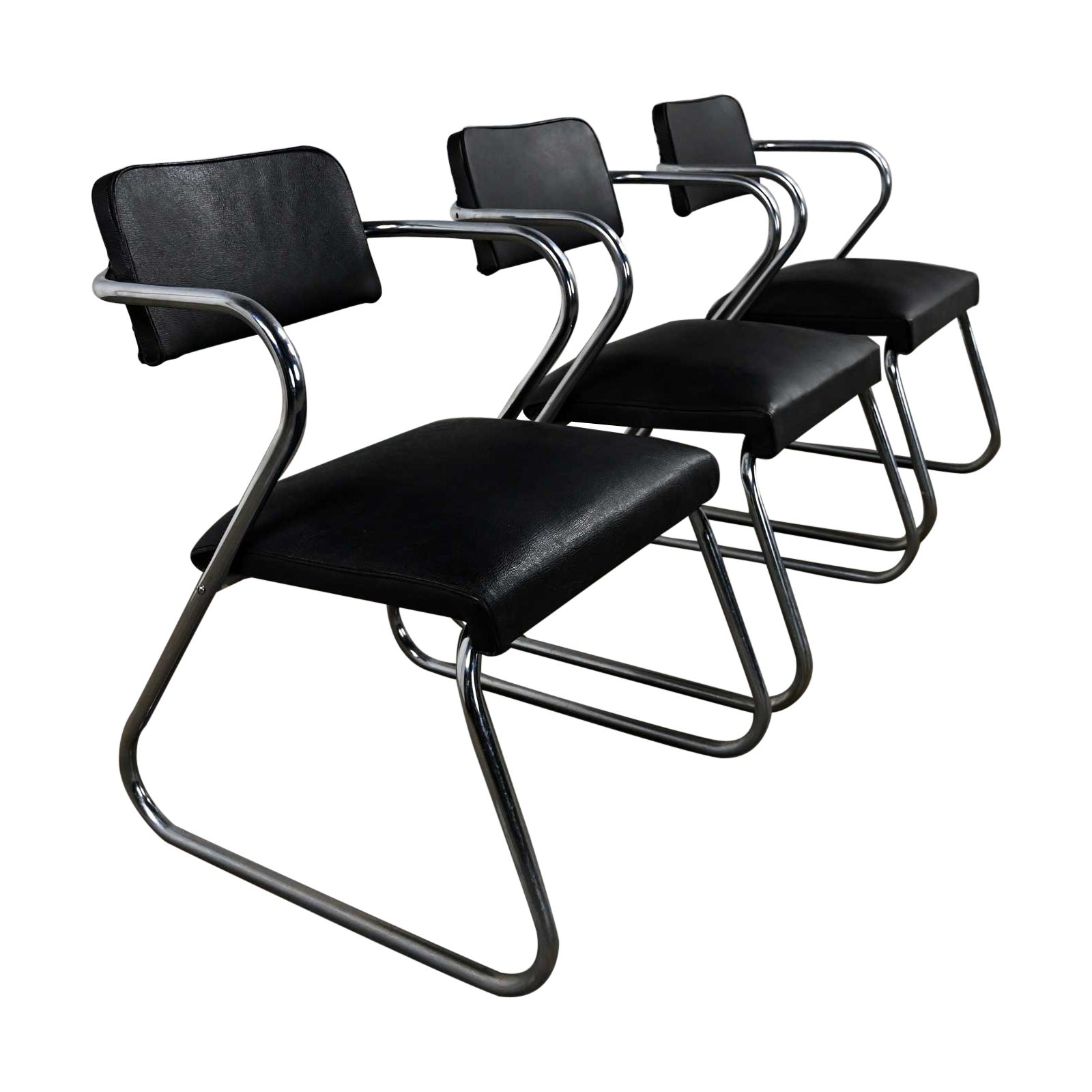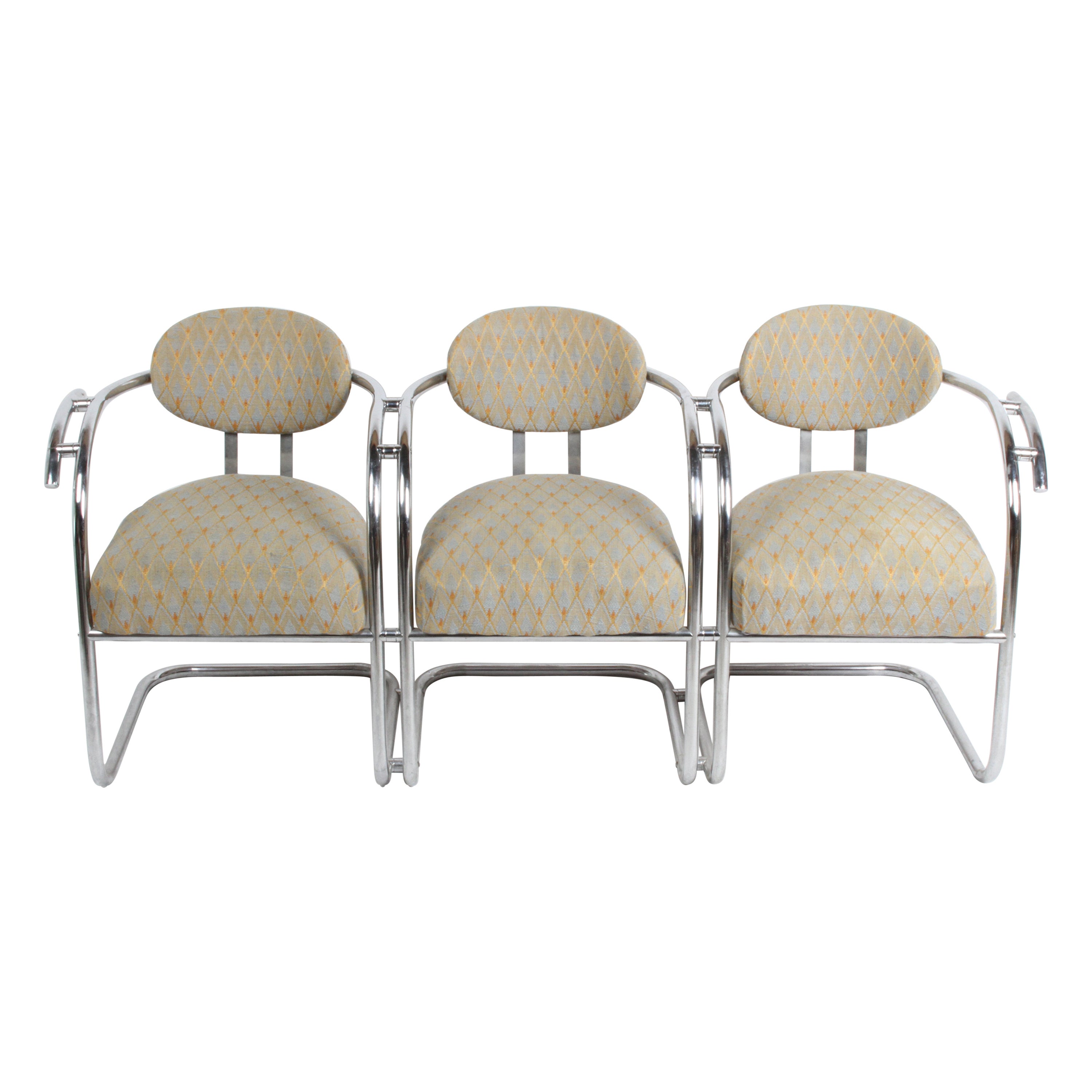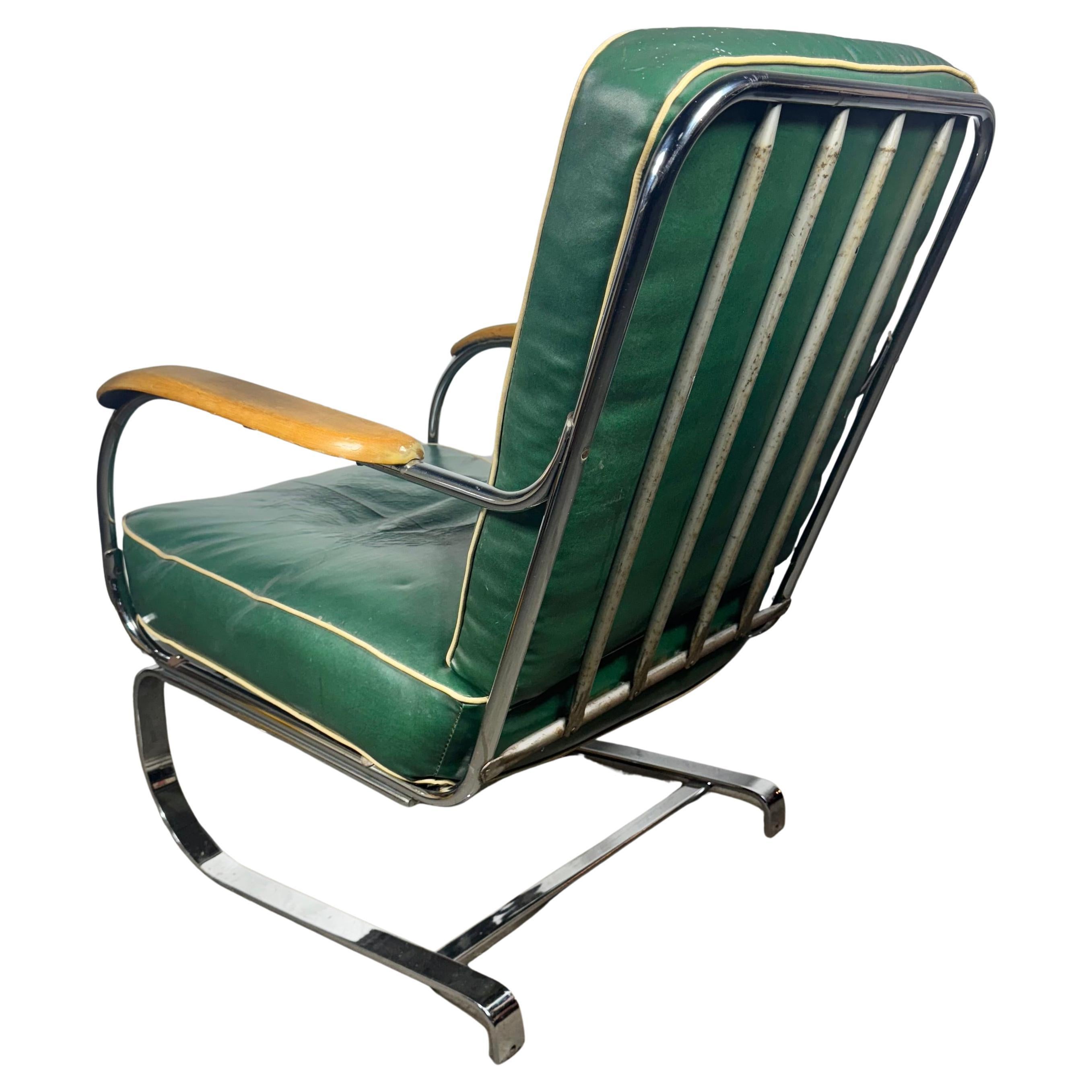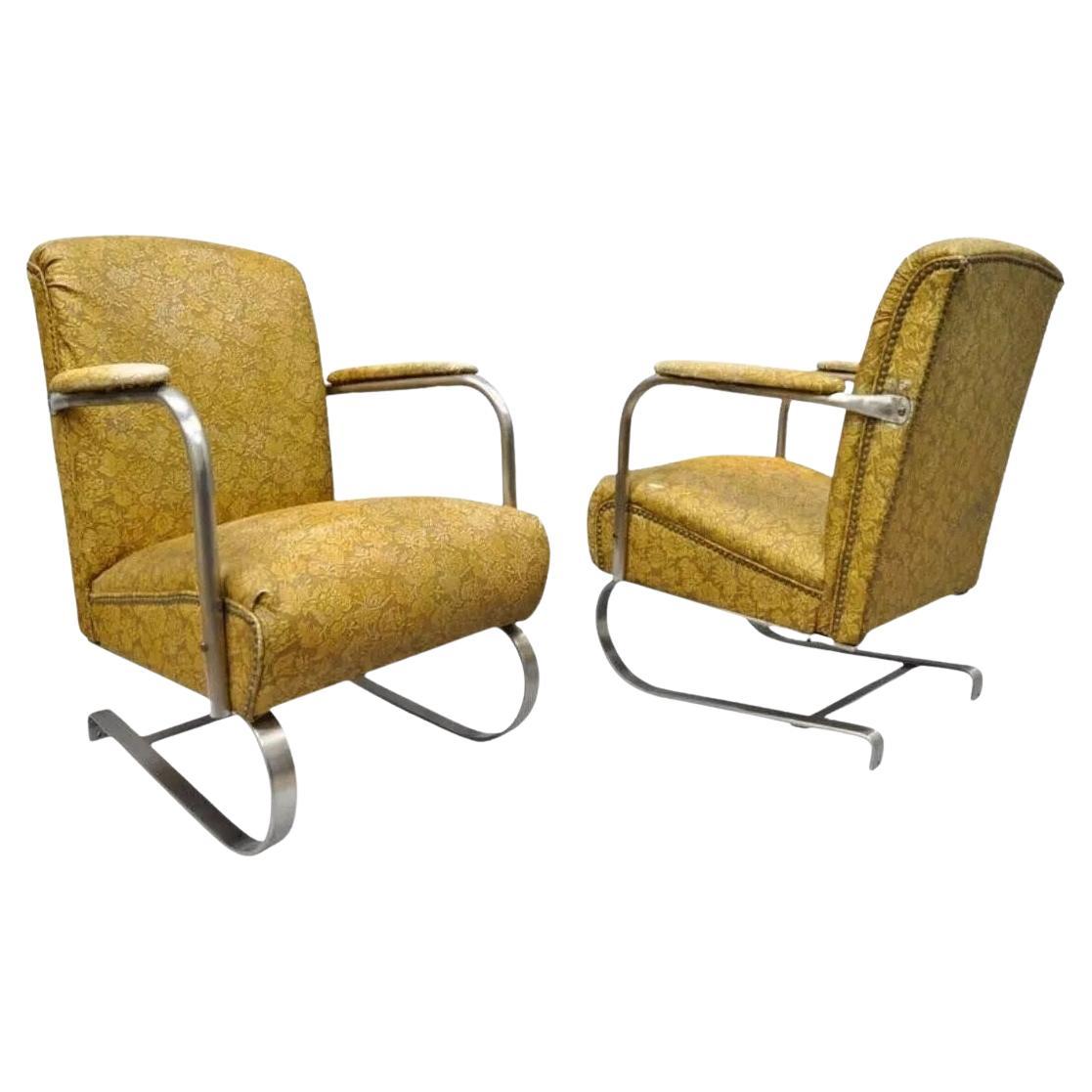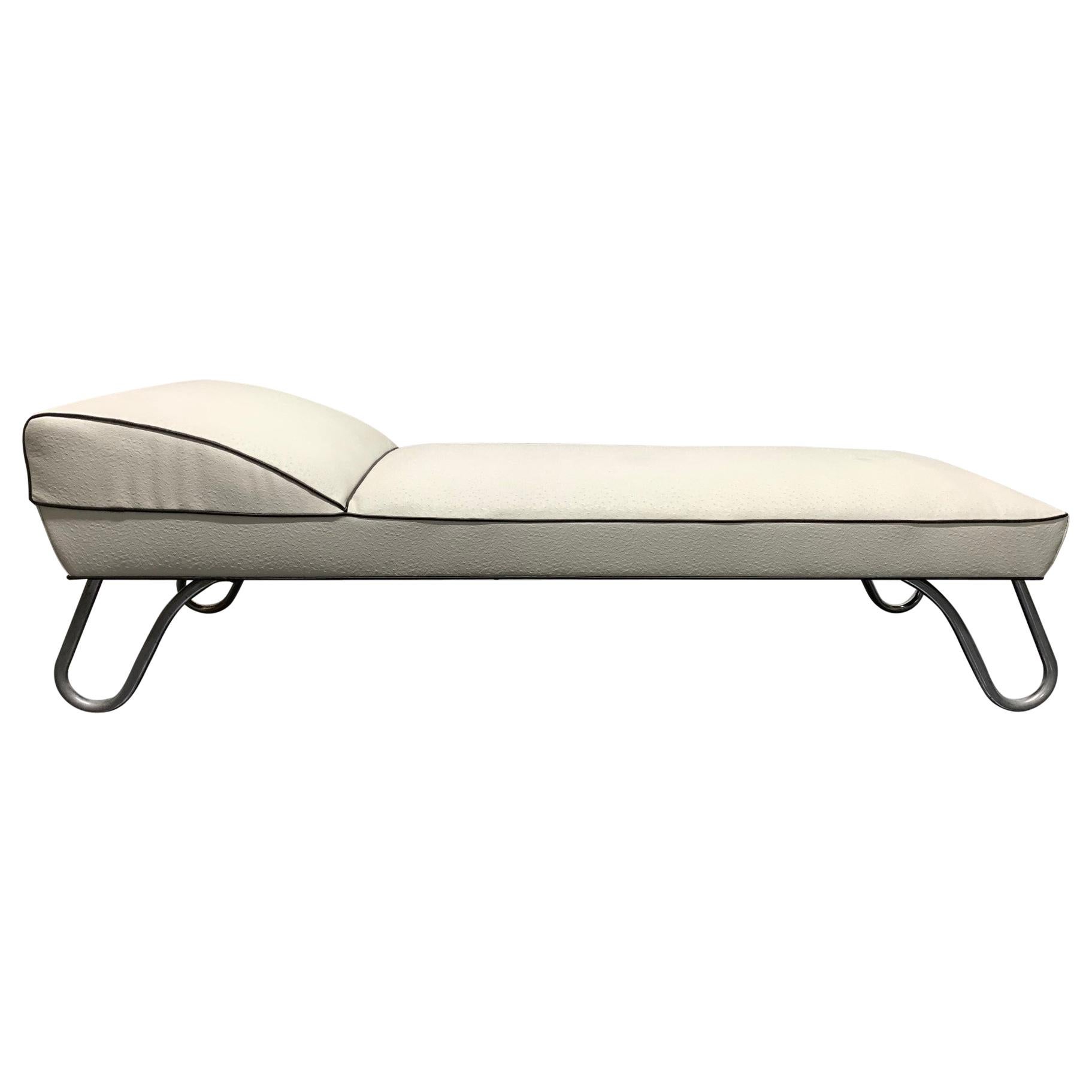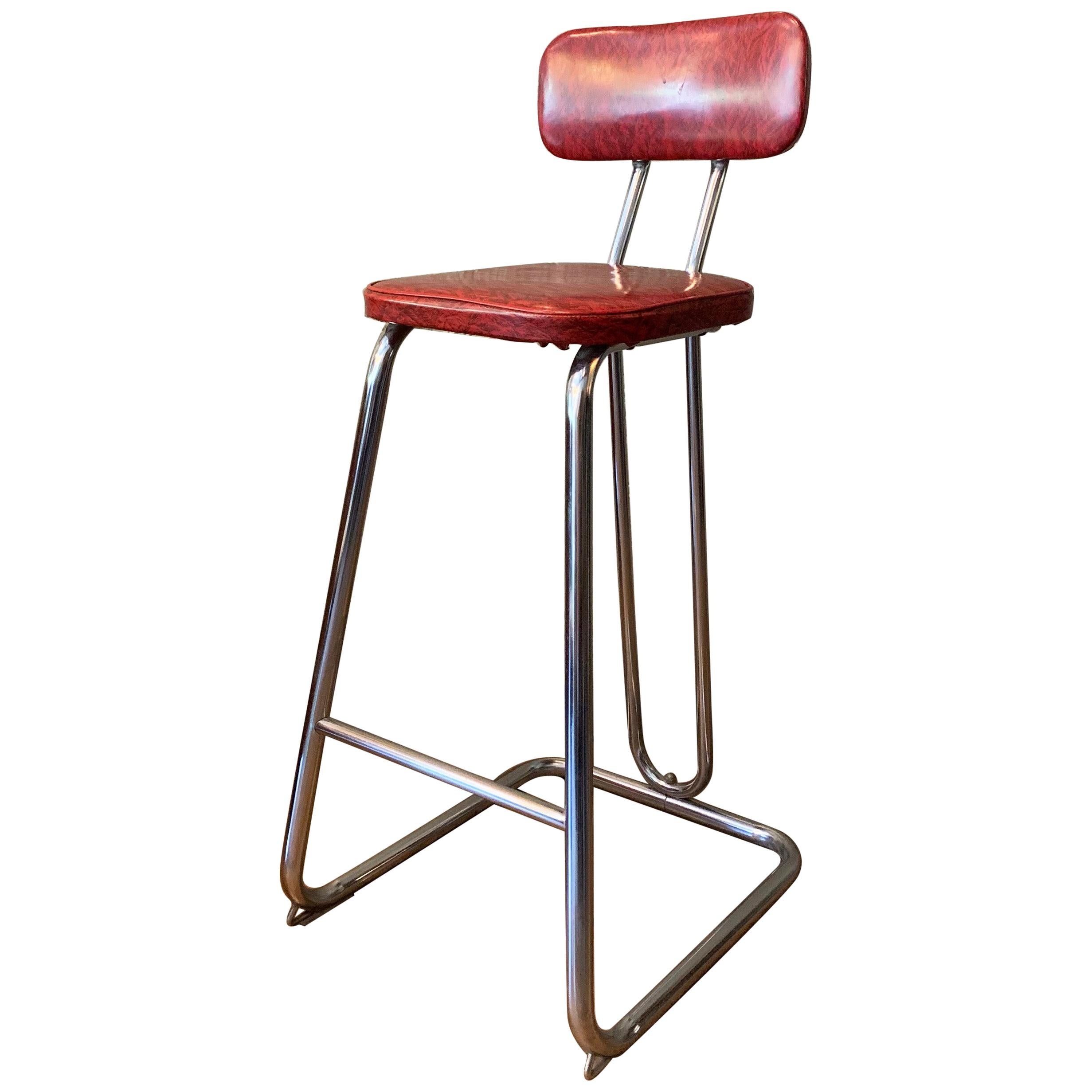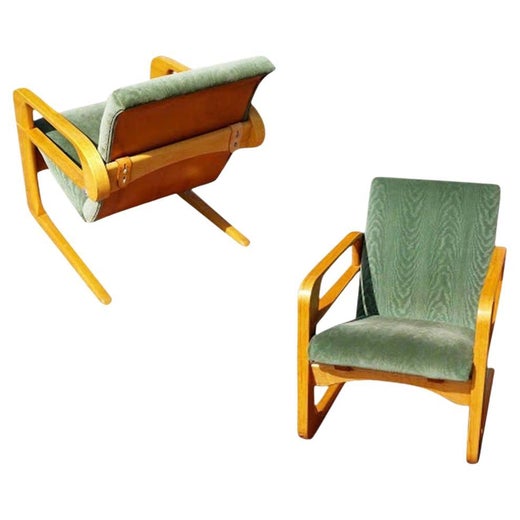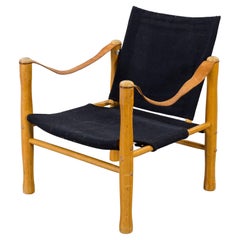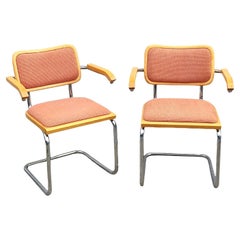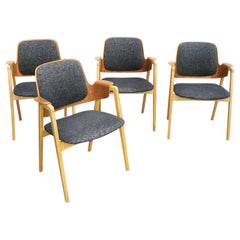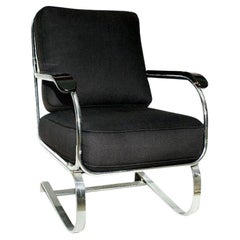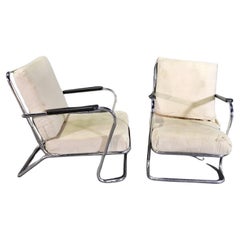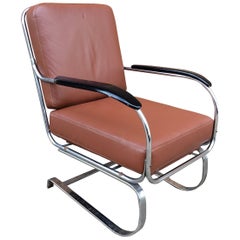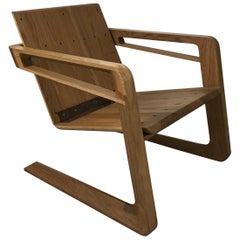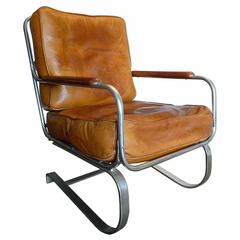
KEM Weber Springer Chair
View Similar Items
KEM Weber Springer Chair
About the Item
- Creator:Kem Weber (Designer)
- Dimensions:Height: 33.08 in (84 cm)Width: 22.84 in (58 cm)Depth: 29.14 in (74 cm)Seat Height: 14.57 in (37 cm)
- Style:Art Deco (Of the Period)
- Materials and Techniques:
- Place of Origin:
- Period:
- Date of Manufacture:circa 1930s
- Condition:Wear consistent with age and use. Very good used condition, extremely comfortable with grown patina.
- Seller Location:Bochum, DE
- Reference Number:Seller: 0110451stDibs: LU98044007803
Kem Weber
Architect and designer Kem Weber arrived in the United States in the vanguard of a wave of progressive Central European talents — among them, Rudolph Schindler, Richard Neutra, Paul T. Frankl and Ilonka Karascz — who would profoundly affect the course of modernism in the United States. In his new home, Weber created a wholly American form of modern design that is sleek and stylish, yet comfortable and practical.
Karl Emanuel Martin Weber — “Kem” was his self-styled nom d’usage — was born and trained in Berlin. In 1914, he became an accidental immigrant to the U.S.. Sent to San Francisco by his teacher-turned-employer, architect Bruno Paul, to oversee an installation at a global design expo, Weber was marooned by the outbreak of World War I. But he quickly grew to love California, even if his early years there were difficult. When design commissions were hard to find, he took jobs as a lumberjack, chicken farmer and art school teacher. (He gained U.S. citizenship in 1924.)
In the mid-1920s, while working for the Los Angeles–based Barker Bros. department store — the largest furniture retailer in the country at the time — Weber regularly traveled around the nation to deliver lectures on modernism. His reputation as a champion of a new, clean and elegant style earned him architectural commissions and contracts to design furniture and items such silverware, coffee services and cocktail shakers. His masterpiece is the Airline lounge chair, designed 1934-1935. With its raked, gently angular frame and cantilevered seat, the chair suggests movement, speed and forward progress. Though it seemed perfect for mass production, Weber was never able to convince a major manufacturer to take it on. In the end, fewer than 300 Airline chairs were made. Today, those may be the rarest examples of Weber’s work, but are always worth looking out for. As you will see on these pages, his designs are both intelligent and stylish. They deserve to be a part of any serious collection of American modernism.
More From This Seller
View AllVintage 1940s Swedish Mid-Century Modern Armchairs
Leather, Canvas, Wood
Vintage 1970s Italian Bauhaus Armchairs
Upholstery, Wood
Vintage 1970s Swedish Scandinavian Modern Armchairs
Velvet, Beech
Vintage 1950s Swedish Mid-Century Modern Armchairs
Upholstery, Beech, Teak
Vintage 1940s French Art Deco Armchairs
Leather, Upholstery, Wood
Vintage 1940s Swedish Art Deco Armchairs
Upholstery, Wood
You May Also Like
Vintage 1930s American Art Deco Club Chairs
Metal
Mid-20th Century Mid-Century Modern Armchairs
Metal, Chrome
Vintage 1930s American Art Deco Armchairs
Chrome
2010s American Art Deco Armchairs
Metal
Vintage 1930s American Art Deco Sofas
Steel, Chrome
Vintage 1930s American Mid-Century Modern Armchairs
Chrome
